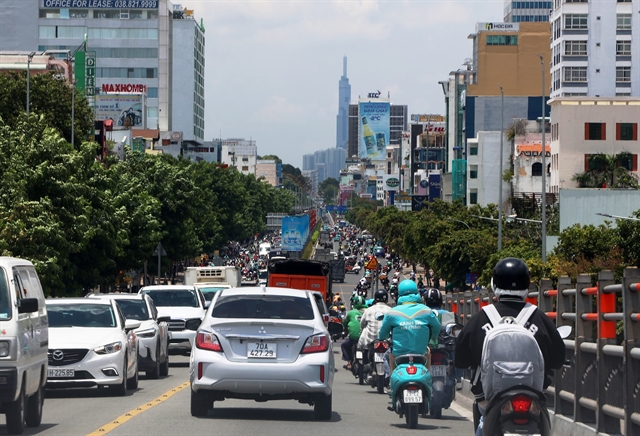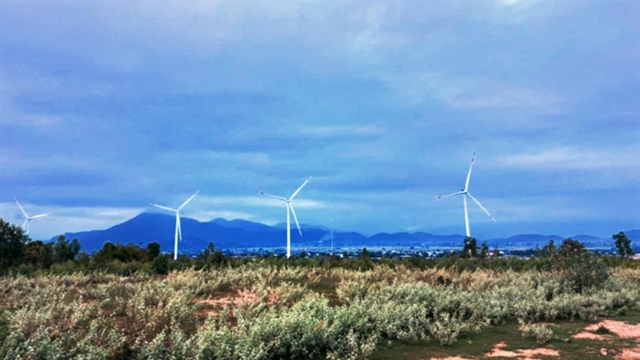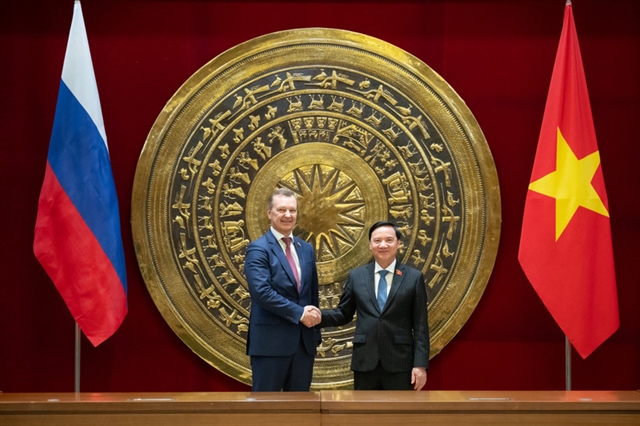 Environment
Environment

.jpg) |
| Engineers from Phong Phú Solar Farm in Tuy Phong District, Bình Thuận Province check the solar power system. — VNS Photo Khánh Dương |
Khánh Dương
BÌNH THUẬN — Việt Nam can accelerate the localisation rate of the renewable energy sector by granting opportunities to Vietnamese enterprises to provide services to local wind and solar power industry.
If they have enough time to make preparations, they can engage in the domestic renewable energy supply chain, experts have said.
Trương Thị Chí Bình, vice chairwoman of the Việt Nam Association for Supporting Industries (VASI), said the engagement of Vietnamese firms in the renewable sector is modest and Việt Nam mostly imports components for solar and wind power industry.
Nearly 90 per cent of the supplies for renewable energy projects were imported, primarily from China, Germany, India and the United States, according to the State Agency for Technology Innovation under the Ministry of Science and Technology.
According to the Clean, Affordable and Secure Energy for Southeast Asia (CASE) project under the Deutsche Gesellschaft für Internationale Zusammenarbeit (German Agency for International Cooperation-GIZ) Energy Support Programme, Việt Nam possesses the capacity to encourage localisation of the home market, with the percentage of solar and wind power rising from 45 per cent to almost 80 per cent and 37 per cent to 55 per cent by 2050, respectively. Localisation might be worth up to US$80 billion, or half of the market's potential.
The renewable energy’s localisation rate refers to the proportion of industrial components and basic materials that are designed, produced and installed domestically as opposed to those that are imported or provided by foreign suppliers.
Bình said several Vietnamese enterprises are able to manufacture hundreds of individual wind turbine components at a time and sell them directly to foreign wind power companies or major turbine suppliers.
The quantity of the produced components varies, even though the number of enterprises that are able to do so is still humble, she added.
Certain Vietnamese enterprises can now provide operations and maintenance (O&M) services in addition to producing wind and solar power componentry.
Thuận Bình Wind Power Company in the southern province of Bình Thuận is one of the pioneers.
The business has initially used wind turbines that are equipped with European technology.
 |
| Windmills at Thuận Bình Wind Power Company in Bình Thuận Province. The company's engineers have assumed windmill operations and maintenance services since 2021. — VNS Photo Khánh Dương |
According to engineer Phạm Quang Triệu, deputy head of the company’s technical and planning division, the European supplier not only delivered wind power gadgets but also took on O&M chores.
Following five years of O&M services from the foreign supplier, the company made the decision to assume O&M in 2021.
“Our O&M readiness now remains very high at about 99 per cent. At the first stages, we can perform certain tasks that require high expertise such as replacing gearboxes, generators without depending on foreign experts,” he told Việt Nam News.
“The technology of turbines is not overly complex. The mechanics ideas are something we can learn on our own. The most important issue is that we need the replacement equipment."
Bình from VASI said like other industries, if you want to do something, customers must give you the opportunity to do that. Unlike other industries, the supporting industry depends a lot on customers. Customers order you to make something and then you start designing and manufacturing that product. It could take several months or even one or two years.
She emphasised the value of early planning, saying that in terms of the long run, the market is the most significant factor.
“Renewable energy factories must give Vietnamese enterprises the opportunity to engage in the supply chain by manufacturing replacement parts,” she said.
"According to the National Power Development Plan VIII, Việt Nam's power system would incorporate a substantial amount of renewable energy. We need a long-term localisation policy from the Government.
"If we have a localisation strategy from the beginning and good preparations, then the Vietnamese enterprises undoubtedly will join the renewable energy supply chain. What local firms need is opportunity and time."
Sharing the idea, Professor Lê Chí Hiệp, lecturer at the HCM City University of Technology, said Vietnamese enterprises are capable of localising renewable energy’s content.
“We have significant markets, human resources, and the ability to expand our market into neighbouring countries," said Hiệp.
“It's policies that are the issue. We need detailed, stable and long-term policies and guidelines on localisation.
“Local enterprises will begin investing if the policies are supportive and appropriate.”
Vũ Chi Mai, CASE project director, said the participation of Vietnamese businesses does not require to be a specific product but can be a connecting element.
Although Việt Nam has considerable installation capacity of renewable energy, the country has not engaged in the production process. In the future, wind power, solar power will account for increasing proportion of the Vietnamese power system. Relying on foreign technologies would come at a heavy cost, she said.
"In order to cut costs, maintain national energy security, and guarantee consumer prices for electricity, State-owned enterprises must be involved in that supply chain.
"We are working with the Department of Technology Development and Innovation under the Ministry of Science and Technology, within the framework of the CASE project, to seek opportunities for Vietnamese enterprises to participate in the production chain."
The department and GIZ plan to create a technology map in the renewable energy that will identify which technologies Vietnamese businesses can own and which companies can participate in supply chain localisation. The State will make investment to help enterprises transfer technology or fund researchers to study replacement parts.
According to the department, this will assist in lowering maintenance expenses, which may result in affordable electricity prices and eliminate the need for Việt Nam to import gadgets. — VNS




